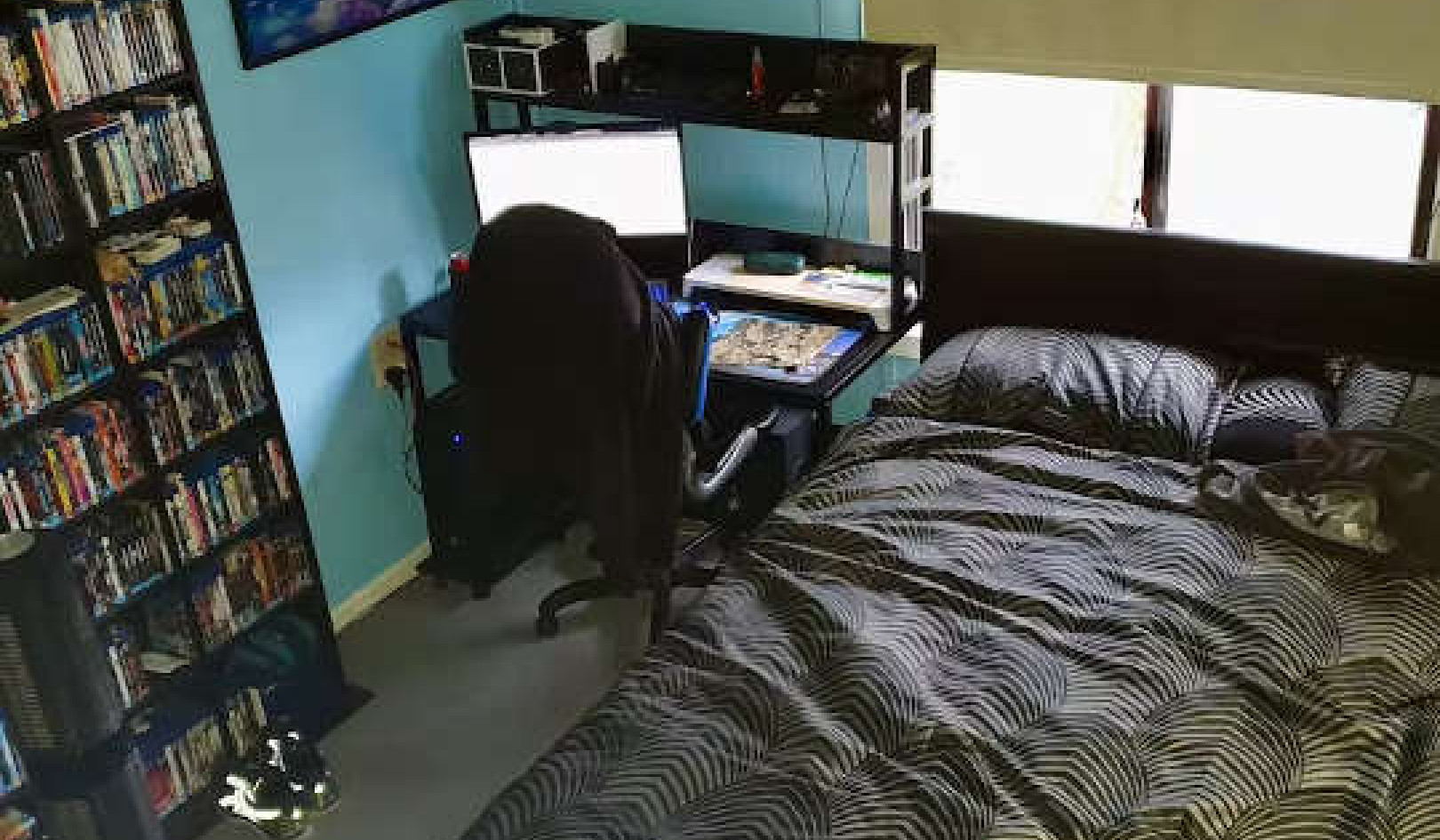
Making friends with our own demons and their accompanying
insecurity leads to a very simple, understated relaxation and joy.
—Pema Chödrön
Case: Sean
Sean visited me for the first time at age thirty-one with both generalized anxiety and a fear of traveling away from his hometown in Long Island, New York. Given the clear, longstanding digestive issues linked to his anxious feeling, we ran some digestive tests and found Sean had leaky gut. Using a protocol of herbs, food, and meditation (chapter 5), Sean was able to greatly improve his anxiety levels in about eight weeks. He felt calmer, but he was still stuck. It seems with this history of anxiety, he became sensitized to leaving places familiar to him, and even though I thought he was better, he couldn’t shake the fear response that had become such a habit. It wrecked his social life, and he was always worried that if he lost his job, which was near his house, he would not be able to go anywhere else to work.
Sean and I mapped out an anxiety strategy. Sean thought about all the possible routes out of town—by means of walking, biking, or driving—and how he would traverse these with his family members and by himself. We rated each scenario on a scale of 1 to 10, with 10 being the most anxiety-provoking.
Once armed with this list, Sean started to try the routes one at a time, making sure he moved through each, and not leaving the situation until the anxiety subsided. Sean found taking a teaspoon of glycine and a little passionflower tincture a half hour before his outing was helpful to take the edge off.
Sean worked hard on this. Today, Sean is okay to go anywhere he likes. What this teaches us is that for some people, even when the physical issues that originally caused the anxiety improve, the pattern of anxiety may continue. I am proud of Sean, and all my patients, as we learn together how to muster courage to face the anxiety head-on and change those anxious thoughts.
Steps to Overcome Your Anxiety
I have talked about the importance of bringing in new ideas, identifying negative messages, changing those messages, and “thinking like a Buddhist” in order to reframe your anxious thoughts. If you have situational anxiety, anxiety about being alone, agoraphobia, or panic issues, this chapter is mandatory reading.
This modern world has a general approach to anxiety and fear: ignore it, avoid it, or take a drug to not feel it. These methods actually keep fear, anxiety, and panic going. These methods send ourselves the message that the fear is too great to handle, and avoidance is the only thing that will help us feel better. This only fortifies the anxiety and robs us of our life.
In Pema Chödrön’s book, When Things Fall Apart, she tells us that “the most heartbreaking thing of all is how we cheat ourselves of the present moment.” She reminds us that the bravest and most courageous people are not without fear, but instead move toward painful situations, consciously feeling the fear they have been avoiding. When people move toward the fear, they do it with compassion for themselves.
You have what it takes—you can be the bravest, too. This is where you are going . . . you are going to feel the fear, have compassion and love for yourself in that present moment, and go ahead with the things you want to do anyway. Once you are done, you will feel exhilarated and in touch with the world.
Step 1: Make a List of What Makes You Fearful
If driving is the issue, you may need to create a list of all the different driving scenarios that are problematic for you. This may include driving on scary routes, being a passenger, or just being near a car. Make the list and rate the items on a scale of 1 to 100. A 100 means it is the most scary, and 1 is the least. For example:
Driving on a service road—65
Driving on the street in front of my house—25
Sitting in the car while it’s running—10
Driving over large bridges—100
Sitting in the passenger seat on the highway—40
Driving on the highway—85
Driving on my town’s main street—45
Organize the items from the least anxiety-provoking to the most:
Sitting in the car while it’s running—10
Driving on the street in front of my house—25
Sitting in the passenger seat on the highway—40
Driving on my town’s main street—45
Driving on a service road—65
Driving on the highway—85
Driving over large bridges—100
Let’s say you experience agoraphobia. Think about the situations that might cause anxiety for you. This is a real list from a patient of mine:
Swimming in the backyard pool with a loved one—8
Going to the supermarket with a loved one—20
Running outside and feeling my heart beat hard—25
Going to the therapist by myself—35
Going to the supermarket by myself—40
Being home alone during the day—60
Swimming in the pool alone—70
Driving my daughter to school—75
Being home alone at night—95
Step 2: Experience Your Fears, One at a Time
There’s no such thing as insignificant improvement.
—Tom Peters
Now you can begin your journey to face the fear. This is the journey back to who you are. Instead of running from the fear, you are going to stay with it. As you do, I want you to have total compassion and love for yourself.
Most of the time, when we experience anxiety, we hate ourselves and feel ashamed. This time, use the feeling of fear to remind yourself of the love and acceptance you have for yourself. This fear is going to be the foundation of your new courage.
There’s a great book called Feel the Fear and Do It Anyway by Susan Jeffers. The title gets at the main idea—to know that you can and will feel that fear and that it will not stop you.
One of the greatest sporting moments of all time came when Muhammad Ali fought the great George Foreman (yes, of the famous George Foreman Grill), who was holding the heavyweight title Ali wanted so badly. At that point in his career, everyone thought Ali was washed up, and Foreman looked unbeatable. Ali took grueling punches for a few rounds, and at one point looked stuck on the ropes as Foreman pummeled him. Even Ali’s own corner thought he was finished.
Foreman knew he had Ali—it was just a matter of when. Suddenly, in the midst of Foreman’s salvo in round seven, Ali poked his head up and said to Foreman, “George, that’s all you got? I thought you was bad. Show me something. Hit me harder.”
Ali ended up demoralizing poor Foreman, who realized that he had already given Ali all he had, and there was no way Ali was going down. Ali stunned Foreman with a combination and Foreman ended up hitting the canvas hard after a few more Ali right hands.
By pretending he was down to lull his opponent into a false sense of security, Ali used what would be known as the “rope-a-dope” fighting style to beat his opponent. You, too, are going to go out, face your fear, take a few punches, and ask your anxiety: “Anxiety, is that all you got? I thought you was bad. Show me something, and hit me harder.”
As you say those words, feel free to speak to your anxiety out loud. You know that anxiety has hit you as hard as it can, and you are still here—and only getting better.
The Rope-a-dope Technique
To rope-a-dope anxiety out of your life, pick the easiest item first and set a schedule to start working on it. For a person with a fear of driving, this may be sitting in the car while it is running and just getting used to it. If you haven’t driven for a long time, even putting the key in the door might be really scary. For an agoraphobic, a good start might be just getting into the backyard pool with someone around or taking a walk down the block and back.
Some people who have social anxiety may feel better doing things alone first. For me, driving with someone in the car was more anxiety-provoking than being alone. We are all different, which is why we must create our own anxiety-breaking task list.
Remember to always pick something that is a bit scary for you but not over-the-top scary. When you challenge your George Foreman-sized anxiety, it is critical to feel that fear, know that your mind is creating it, and it cannot really hurt you. And remember that no matter what happens, it will pass.
Do not leave the situation until you feel it calm down first. Leaving early will only teach your body that that scary thing really needed to be avoided—this will reinforce the anxiety. If you let it move through and calm, you will learn the situation is under control. And always remember, going out and trying is what is important—every outing is a success—no matter the result. In time, you can succeed.
If you are not quite convinced you are ready to challenge yourself, read the next step to help support the process a little bit more.
Step 3: Add a Fear-Supporting Supplement
For many of my patients, I also recommend they increase their anxiety-busting supplements when they start work on their lists. My favorite is the simple combination of a teaspoon (5 grams) of glycine with thirty drops of passionflower in a little water. You can take it about a half hour before going out to face and feel the fear. It will help you adjust to the fear—you will feel it and move through it easier.
For those with very strong anxiety, I also recommend 300–600 mg of phenibut a half hour before moving on to the anxious moment. This will help “take the edge off” the event and allow you to work through it a bit easier, without suppressing your feelings or journey through it.
As we have noted, doctors often prescribe antianxiety medications like Xanax and Ativan as a way to suppress the stress response. This is not what we are doing here. The natural supplements are gentle, and in my experience with patients, they do not suppress emotion.
Supplements help bring the anxiety down a few notches and allow you to experience that compassionate fear experience that allows you to get to know your bravest self. Eventually, you will be able to face the fear without the supplements. That will be a good feeling.
©2015 by Peter Bongiorno. All rights reserved.
Reprinted with permission of the publisher, Conari Press,
an imprint of Red Wheel/Weiser, LLC. www.redwheelweiser.com.
Article Source
 Put Anxiety Behind You: The Complete Drug-Free Program
Put Anxiety Behind You: The Complete Drug-Free Program
by Peter Bongiorno, ND, LAc.
Click here for more info or to order this book on Amazon.
About the Author
 Dr. Peter Bongiorno is a licensed naturopathic doctor and acupuncturist with offices in NYC and Long Island, and an adjunct faculty member at New York University. He is a graduate of Bastyr University, the leading accredited university for science-based natural medicine. Dr. Bongiorno is vice-president of the New York Association of Naturopathic Physicians, a member of the American Association for Naturopathic Physicians, Physicians for Social Responsibility, and a Diplomat in Acupuncture. He has contributed to The Textbook of Natural Medicine, and The Biology of Depression and Dr. Michael Murray's Encyclopedia of Healing Foods. He has worked as a researcher at the National Institutes of Health and Yale University, and has co-authored numerous medical journal articles in the field of neuroendocrinology. Visit him at www.innersourcehealth.com.
Dr. Peter Bongiorno is a licensed naturopathic doctor and acupuncturist with offices in NYC and Long Island, and an adjunct faculty member at New York University. He is a graduate of Bastyr University, the leading accredited university for science-based natural medicine. Dr. Bongiorno is vice-president of the New York Association of Naturopathic Physicians, a member of the American Association for Naturopathic Physicians, Physicians for Social Responsibility, and a Diplomat in Acupuncture. He has contributed to The Textbook of Natural Medicine, and The Biology of Depression and Dr. Michael Murray's Encyclopedia of Healing Foods. He has worked as a researcher at the National Institutes of Health and Yale University, and has co-authored numerous medical journal articles in the field of neuroendocrinology. Visit him at www.innersourcehealth.com.
Watch a video with Dr. Peter Bongiorno and Pina LoGiudice: We Have Medicinal Power from Food Choices

























